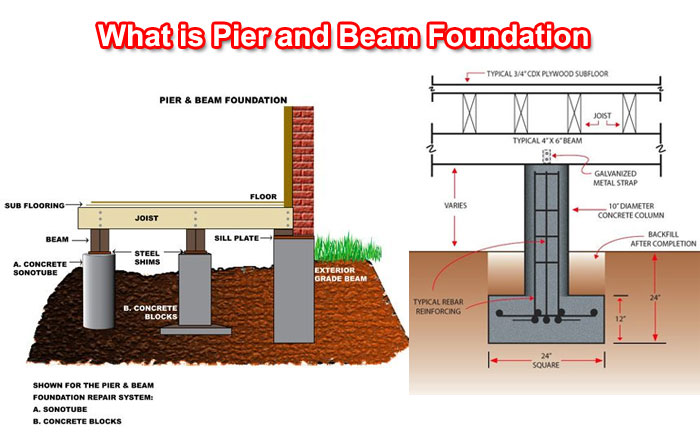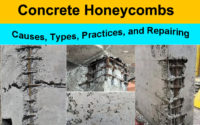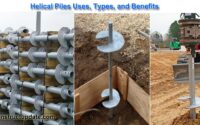What is Pier and Beam Foundation | Pier and Beam Foundation Advantages, Disadvantages
In the construction of a building, the foundation is critical. The structure’s strength is determined by how the building’s foundation is created.
Pier and beam foundation is commonly used in the construction of these constructions in the past due to their cost-effectiveness.
In this post, you will learn about the Pier and Beam Foundation, as well as its advantages and disadvantages.
What is Pier and Beam Foundation?
The pier and beam foundation is a large diameter cylindrical column that supports the superstructure while transferring the complete load to the subterranean stratum.
The footings, which are the columns that support this construction, are also known as the pier and beam foundation.
To transport the load into the ground, the beams are attached to the piers. It’s a common sort of foundation that’s commonly employed in the construction of residential structures.
The three major elements of a pier and beam foundation are concrete piers that anchor the house foundation to the ground.
The posts or piles that run between the piers and the horizontal beams are the second and third, respectively, while the wooden beams that support the house’s weight are the third.
The foundation for a pier and beam house is built to support the building. Post and beam foundations, also known as post and beam foundations, are used to raise homes and protect them against flooding and moisture.
Pier and Beam Foundation Has the Following Benefits:
Pier and beam foundations are used to raise structures, which helps to keep them dry and prevent them from flooding.
Because the home is built above a sufficient height from the ground, there is a high crawl space available to install the Plumbing and Electrical Pier Foundation provides Termite control.
When compared to other types of foundations, Pier and Beam Foundation Repair is quite inexpensive.
Any sort of ground can be used to build a pier and beam foundation.
Disadvantages of Beam and Pier Foundation:
There is a risk of dampness developing if the foundation of the structure is not properly aired.
If the crawl space is too low, the builders will have a lot of difficulties maintaining and repairing the pier and beam foundation.
It is difficult to lay flooring if the pier and beam foundation is not properly built.
Design Pier and Beam Foundation:
Pier and beam foundations are designed to transfer the complete superimposed load from the inappropriate bearing layers to the firm soil layer.
Pier and beam foundation spacing is based on cost, which is dictated by the depth of the piers and the sub-soil conditions.
Pier and beam foundations have a number of advantages, and different types of foundations are typically built in places with dry soil.
In order to sustain the structures, the foundation piers are typically spaced 8 to 10 feet apart.
How to Construct a Post and Pier Foundation:
It is possible to build a pier and beam foundation on unleveled ground. For the construction of different types of foundations, flat ground is required for the construction of the building.
To avoid fungal growth difficulties, the building’s foundation should be well aired.
The crawl space beneath the foundation should be sufficient so that the builders do not have any difficulties maintaining and repairing the structure.
The piers are made of brick and the reinforced concrete is made of mass concrete. The crawlspace is created during the pier and beam foundation construction and is utilized to install the plumbing and electrical wiring.
Precast concrete beams are used to support the tops of the piers.
Difference Between Pier, Beam, and Slab:
It is critical to lay a solid foundation for the building. The following are the differences between a pier and beam foundation and a concrete slab:
Concrete slab foundations are common in warm areas where the ground is less likely to freeze, causing fissures in the structure’s foundation.
In comparison to other forms of foundations, pier and beam foundations are fairly simple to build and repair.
Because of the crawl space into the home, there are lower chances of flooding damage with slab foundations.
The pier and beam foundation raises the structure to protect it from flooding and moisture damage.
When compared to pier and beam foundations, a concrete slab foundation is more cost-effective.
Pier and beam foundations give additional air insulation, allowing you to save money on energy and keep the space cool.






